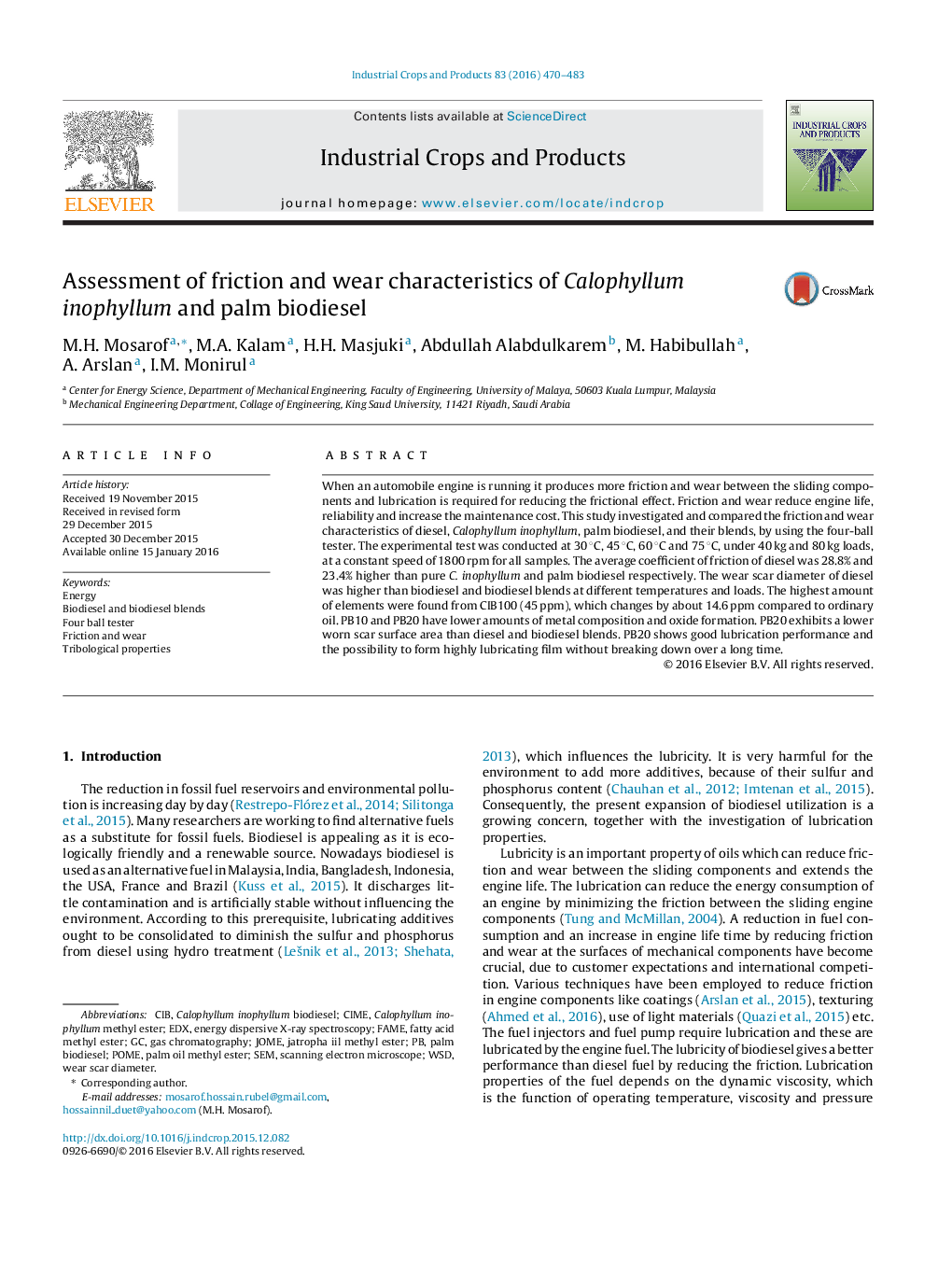| Article ID | Journal | Published Year | Pages | File Type |
|---|---|---|---|---|
| 4512281 | Industrial Crops and Products | 2016 | 14 Pages |
•The COF of diesel is higher than biodiesel blends under various load condition.•The average WSD of diesel is 38.5% higher than other biodiesel blends.•PB20 contains lower amount of metal compositions under high load condition.•PB20 exhibits lower worn scar surface than diesel and other biodiesel blends.•PB20 has better lubrication properties than diesel and other biodiesel blends.
When an automobile engine is running it produces more friction and wear between the sliding components and lubrication is required for reducing the frictional effect. Friction and wear reduce engine life, reliability and increase the maintenance cost. This study investigated and compared the friction and wear characteristics of diesel, Calophyllum inophyllum, palm biodiesel, and their blends, by using the four-ball tester. The experimental test was conducted at 30 °C, 45 °C, 60 °C and 75 °C, under 40 kg and 80 kg loads, at a constant speed of 1800 rpm for all samples. The average coefficient of friction of diesel was 28.8% and 23.4% higher than pure C. inophyllum and palm biodiesel respectively. The wear scar diameter of diesel was higher than biodiesel and biodiesel blends at different temperatures and loads. The highest amount of elements were found from CIB100 (45 ppm), which changes by about 14.6 ppm compared to ordinary oil. PB10 and PB20 have lower amounts of metal composition and oxide formation. PB20 exhibits a lower worn scar surface area than diesel and biodiesel blends. PB20 shows good lubrication performance and the possibility to form highly lubricating film without breaking down over a long time.
